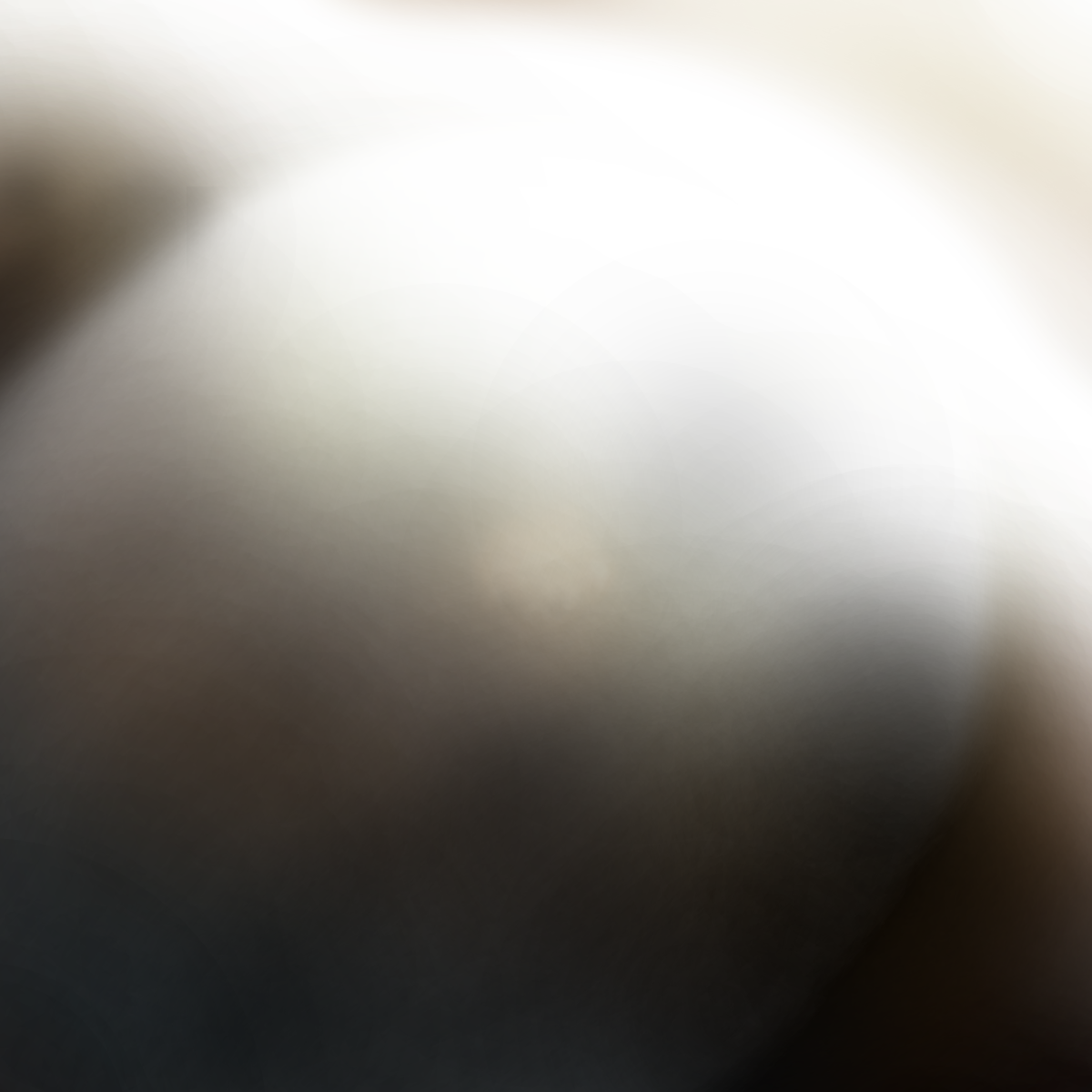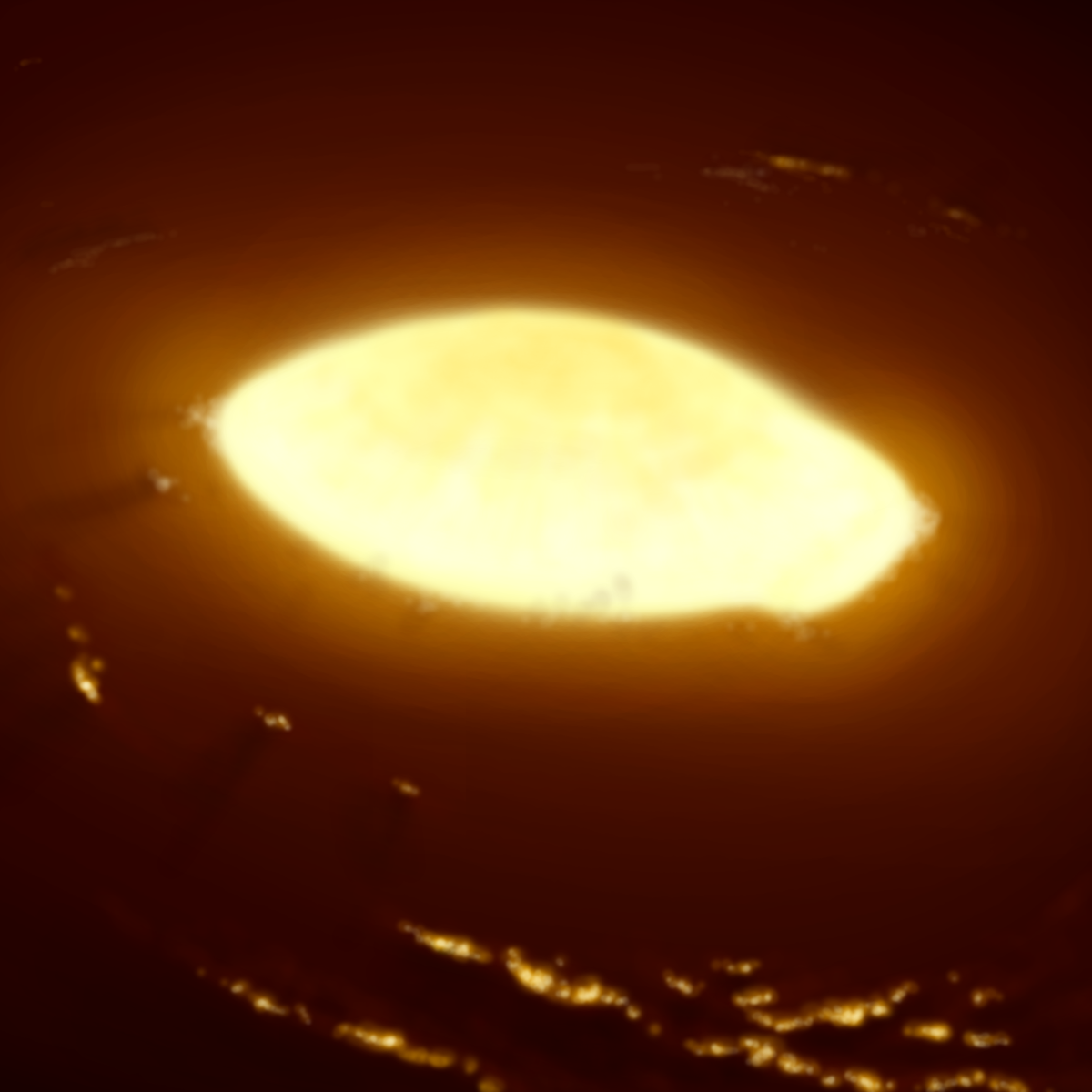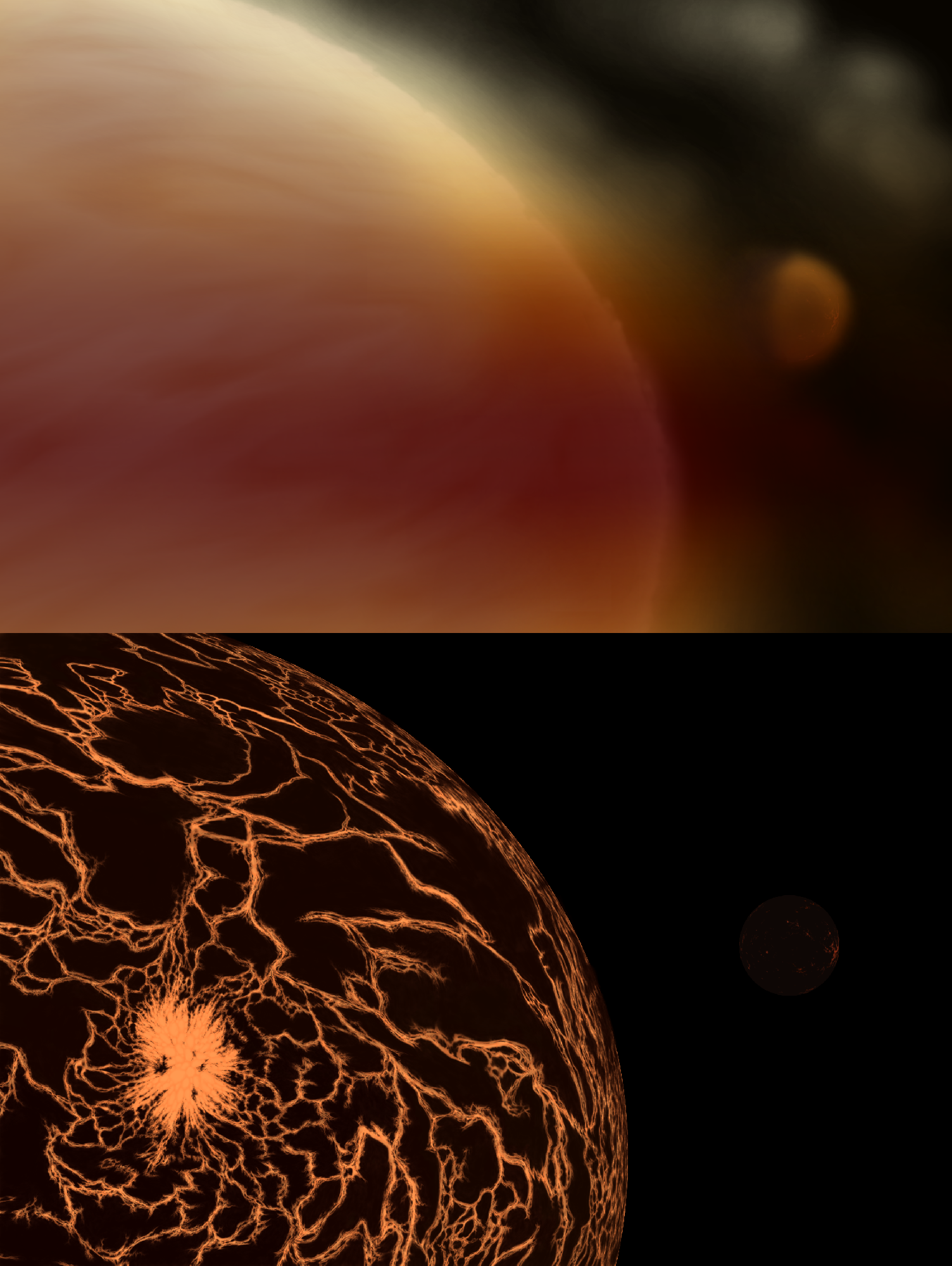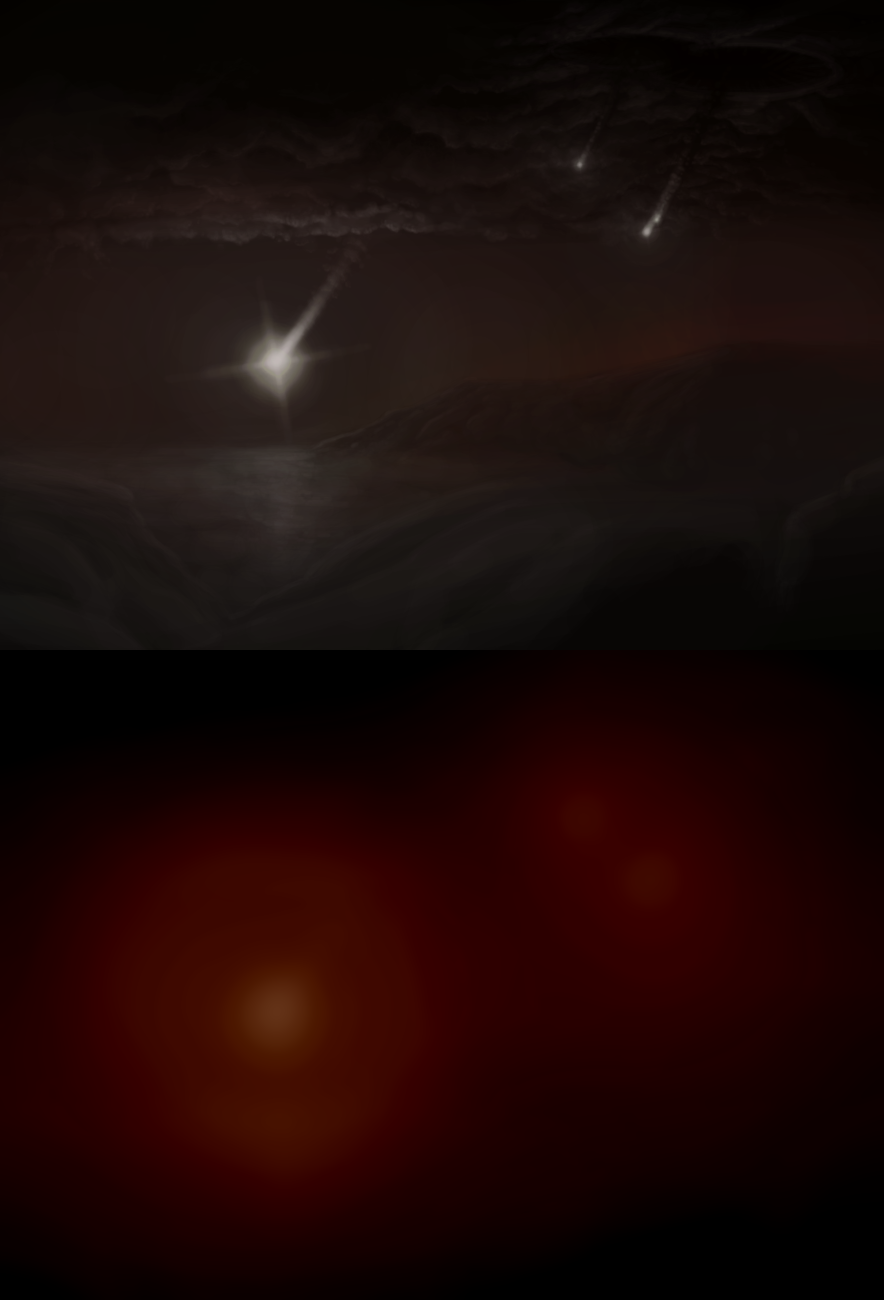Remove these ads. Join the Worldbuilders Guild

Timeline of Planet Oxidi
The timeline of Lite System's Planet Oxidi from it's formation onwards.
- 0 - 600,000,000: Preorganic Eon (Directory)
- 600,000,000 - 1,500,000,000: Primordial Eon (Directory)
- 600,000,000 - 950,000,000: Precellular Era (Timeline)
- 600,000,000 - 680,000,000: Solar Haze Period (Timeline)
- 600,000,000 - 641,000,000: Abiogenic Epoch (Timeline)
- 600,000,000 - 620,000,000: Restartis Age (Timeline680,000,000 - 900,000,000: Long Primordius Period (Timeline)900,000,000 - 950,000,000: First Speciation Period (Timeline)950,000,000 - 1,500,000,000: Pseudocellular Era (Timeline)1,500,000,000 - 1,900,000,000: Umbrian Eon (Directory)1,900,000,000 - 2,500,000,000: Illumine Eon (Directory)
Preorganic Eon
Year 0 - Year 600,000,000
The Preorganic Eon is the eon in Oxidi's history immediately following it's formation up to the appearance of the first lifeforms. It begins as a lava ball or more accurately disk, and by the end of the era is mostly spherical, has a solid tectonically active crust, and mineral-diverse liquid water oceans.
-
Beginning
Planet Oxidi Is Born
CelestialThe planet Oxidi emerges from the protoplanetary disk for the first time as a single together mass of liquid rock. -
Year 0 to 100,000,000
Early Preorganic Mass Ejections
CelestialPlanet Oxidi, newly formed, rotates at an unusually high speed, causing it to flatten in it's hot liquid state. Much of the equatorial material is thrown out due to inertia, some of which forms the moon. -
Year 100,000,000 to 350,000,000
Mid Preorganic Crust Formation
CelestialThe crust of the planet and the moon form due to cooling. The moon cools faster due to it's smaller mass and less heat energy retained. The red band across the equator is the shadow from the protoplanetary disk filtering some of the star's light. -
Year 350,000,000 to 600,000,000
Late Preorganic Condensation
Celestial
Detailed rendering (top) and realistic atmosphere-obscured rendering (below). In reality not much would be seen below the clouds except for illumination from meteors and meteorites burning on entry.Water clouds and oceans form on the now solid surface of Oxidi while debris from the system's formation continue to add to the planet's mass of water and rare elements and molecules.
Primordial Eon
Year 600,000,000 - Year 1,500,000,000
The beginning of the Primordial Eon marks the beginning of life on Oxidi. Biochemistry is simple and genetics are at a pre-RNA stage. Water oceans formed only a few hundred million years prior to now. This is a dark, hot, choking, humid, hydrogen sulfide and ammonia-rich world, with acid oceans and high temperatures and pressures. All metabolism at this stage is purely anaerobic and chemolithotrophic.
-
Year 600,000,000 to 950,000,000
Precellular Era
Era beginning/endThis era is a time prior to any form of cell-based organism. Most organelles that evolve during this era exist as independent lineages in fluctuating states of symbiosis or competition with others. Early Primordial Eon
----> Precellular Era -
Year 600,000,000
to 680,000,000Solar Haze Period
Era beginning/endAs solar output increases dust and gas nearest the star is blown away by it's solar winds. Oxidi is lightly coated in some of these elements. Early Primordial Eon
----> Early Precellular Era
--------> Solar Haze Period -
Year 600,000,000
to 641,000,000Abiogenic Epoch
Era beginning/endConditions on planet Oxidi are optimal for the generation of organic self-replicating molecules and there is no advanced life to outcompete them. Several unrelated lineages appear independently. Collectively they are all regarded as "premorphius". Early Primordial Eon
----> Early Precellular Era
--------> Solar Haze Period
------------> Abiogenic Epoch -
Year 600,000,000
to 620,000,000Restartis Age
Era beginning/endIn the beginning no self-replicating genomes sustained their lines of succession very long and went extinct not long after their genesis. In this sense life restarted many times in many places, only if the most lenient definition of "life" is used. Early Primordial Eon
----> Early Precellular Era
--------> Solar Haze Period
------------> Abiogenic Epoch
----------------> Restartis Age -
Year 691,485,157.12
Luca, the Last Universal Common Ancestor
Life, BirthLuca, the Last Universal Common Ancestor of all life to follow, is born, produces successful descendants, then dies.
-
Year 950,000,000 to 1,500,000,000
Pseudocellular Era
Era beginning/endMost life still exists as molecule and organelle lineages in fluctuating states of competition and symbiosis with each other. However, together they exhibit much more distinctly cell-like qualities. More primitive biological chemistry has been outcompeted by the start of this era. By the end of this era some true cellular organisms have evolved. Mid-Late Primordial Eon
----> Pseudocellular Era -
Year 1,430,000,000
to 1,500,000,000Nightbreak Period
Era beginning/endDuring certain seasons at certain latitudes the cloud cover thins enough to bask the surface in a dark, eerie red glow. This is the first change from the perpetual darkness experienced by the planet until now. Late Primordial Eon
----> Late Precellular Era
--------> Nightbreak Period












